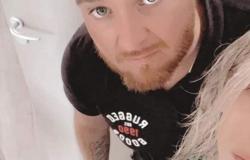For the first time in Europe, a reusable rocket demonstrator flew freely on Thursday in Payerne. A feat achieved by a group of EPFL students, united under the name “Gruyère Space Program”. Beyond the feat, the technologies acquired could be used in industry.
Payerne looked like Cape Canaveral this weekend. At the end of a countdown worthy of American launches, the Colibri rocket, a two-meter high machine built by EPFL students after three years of work, leaves the ground .
At an altitude of 100 meters, it moves on the horizontal axis before landing on its feet, exactly where it took off. Cries of joy and tears: the mission is successful.
A European feat
This feat carried out in Payerne is reminiscent of the principle of SpaceX’s rockets. “This reuse technology makes complete sense,” explains Julie Böhning, co-founder of the Gruyère Space Program. “It is not that complicated and even a team of students, from Gruyère, is capable of using it.”
On another scale, this is what the Ariane group is also trying to achieve with its Thémis reusable rocket demonstrator. But this Thursday in Broye, it was the first time that such a rocket demonstrator flew freely.
“Obviously, we have seen this several times in America, but these are years of work and colossal resources. They did this with a handful of sponsors,” marvels Didier Callmander, head of the civil aerodrome in Payerne which closely follows the Gruyère Space Program.
External content
This external content cannot be displayed because it may collect personal data. To view this content you must authorize the category Social networks.
Accept More info
Technologies for industry
Taking off, moving through the air and landing are the basics of spatial mobility. To master it, members of the program had to work on propulsion and control algorithms. And beyond the student project, these are technologies that interest industry.
“If we manage to optimize mobility in space, we make it possible to operate in space as in an industrial location,” explains Julie Böhning.
The Gruyère Space Program has launched its own start-up, which will seek to use these technologies to repair and extend the life of satellites in space.
>> See also the interview with Julie Böhning in Couleurs Locales:
Leander Duggan
Swiss






